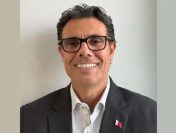The year 2015 was tough for Middle East and North Africa (MENA) and predictions are that 2016 will be even tougher. This comes as the International Monetary Fund reports average economic growth slowing to below 3 percent in the Middle East, with fiscal deficits close to 15 percent. There are always high expectations from the Middle East given the extraordinary story of the region. However given the fact that the region is plugged into the world economy, the effects of global events will be felt here as well.
Some stakeholders of the business are gearing up for what appears to be a challenging year. “While there was growth, the level of growth was not up to expectations in 2015. We see the trend continuing in 2016 as well. The global commentary has not changed significantly and China, Russia and Europe are likely to be soft, affecting trade and tourism numbers. Similarly soft oil prices are likely to cause large government projects being slowed down or put on hold,” says Satish Mayya, CEO, BPG Maxus.
However, there are those who are not affected as yet by the gloomy situation. Although, funds have been restricted, especially in the advertising sector, this has not impacted companies whose revenues are driven from sources such as premium content or subscriptions. “We had seen good growth in 2015, reassuring us that we are in the right direction. Our primary focus is putting premium content at the forefront of broadcast technology development. This year there will be increased competition with newer players in the region, but we continue to be optimistic,” remarks Khulud Abu Homos, EVP, Programming and Creative Services, OSN.
MENA: Still A Growth Region
Low oil prices, political conflicts and the global economic slowdown make short term prospects of recovery unlikely. Despite this, 2016 will hold opportunities for the industry and the region. This is driven by various factors. The post-Lehmann experience taught that companies that benefitted from the slowdown were those that continued to invest in brand. MENA is becoming a fertile hub of entrepreneurship and startups, creating a strong growth driver. Add to this the opening up of newer markets and revenue streams, and MENA builds a great argument in its favor.
Shoppers in this part of the world may have less disposal income and would focus on spending on necessities but MENA is the full package. “I would remain buoyant on the region because MENA bounces back,” says Ahmed Yahya, New Businesses Development Director, Kelloggs Middle East, Africa and Mediterranean, adding, “It is a world of its own with every kind of market – developed markets like the UAE, developing markets such as Saudi Arabia and emerging markets including Iraq and Iran. You have the whole gambit here. Brands that want to succeed need to wither the storm. Let’s not walk away from long term strategies because in any case, brands are not built overnight.”
Sitting with a population of 80 million, Iran is double the size of GCC (Gulf Cooperation Council). Logic dictates that as a marketer even if Iran came into the mix, half way into the year, it will give the same number of consumers of a full year of GCC.
Efficiency, Efficiency, Efficiency
If there was one prominent word that every marketer would focus on in the year, it is efficiency. Whether it is about spending ad dollars, building new initiatives and programs or the typical digital versus conventional media debate, all strategies will have to be driven by efficiency. “We, as an industry, and in equal amount our ad dollars, need to work harder in the year. The only we can make that happen is by upping our focus on efficiency,” Mr Yahya observes.
Marketing budgets are expected to be constricted this year, and the solution is getting the best out of the situation by exploring newer opportunities amid challenges. “Budget constraint would lead to exploring newer avenues such as digital that will come at a lesser cost but would need a more innovative approach. We must look at this as an opportunity and craft solutions that will increase returns without necessarily increasing investments. This kind of a mindset would essentially achieve three things – make the ad dollar work harder, helps the finance team in getting some savings and thirdly, it will bring learnings we may have missed on otherwise,” Mr Yahya states.
Unwise To Underestimate KSA
The impact of the oil price fall is expected to climax in 2016, with monetary authorities in Saudi Arabia specifically starting to revise fiscal policies. This is likely to have a direct negative short term effect as it will influence consumer spending due to reduced disposable income in conjunction with higher energy rates. “In light of the energy price hikes in Saudi Arabia that were announced during the Saudi Arabian budget for 2016, along with a gradual reduction in government subsidies over the next five years and the plans to introduce VAT and taxation on items such as cigarettes and soft drinks, the private sector ad spend will further drop in 2016,” explains Faysal Zok, Managing Director, Initiative KSA.
However, Saudi Arabia has shown growth despite the drop in oil prices over the last few years. There is precedent where point-of-sale (POS) spending increased when gasoline prices fell in 2006 and decreased with Saudi-ization, and the end of the amnesty program for expats, introduced in 2012.
“In the private sector, expectations are that telecom and banking will not be impacted directly, as the effects on these will be dependent on the ability of each company to pass-on the additional costs to consumers. On the other hand, public sector ad spending may well maintain 2015 figures, driven by high government support for sectors such as education (20 percent of the budget and at the top following defense), health and social affairs (12.5 percent of the budget), and water, agriculture and manufacturing (9 percent of the budget). These are all sectors that have recorded considerable ad spend amounts in the past few years and show a potential to hold that support in 2016,” argues Mr Zok.
This year too, Saudi Arabia, that has the largest economy in the GCC, is pursuing a fiscal adjustment strategy centered on efficiency and viability. The 2016 budget gives special focus on long term sustainable development. Lower subsidies and introducing new fees that will allow the economy to mitigate the impact of low oil prices, increase efficiencies and create globally competitive industries. “In 2015, Saudi’s non-oil revenue contributed 27 percent of total revenue versus 10 percent in 2014, recording a 36 percent growth. We believe this trend will continue, reflecting the government’s commitment to diversifying and enhancing productivity,” Mr Zok asserts, reiterating that Saudi Arabia will continue to be an important growth market in the region.
A Prepared Region
There is no denying that the broader international economic environment will remain volatile this year, mostly with emerging markets adjusting to the normalization of US monetary policies. Nonetheless, despite the economic turbulence, Saudi Arabia, Qatar and the UAE are still among the lowest countries in terms of the ratio of debt to GDP, with KSA at 5.8 percent, the UAE at 16.7 percent and Qatar at 31.5 percent, compared with 60 percent for countries such as India, France, Germany and the USA.
For the Middle East, political turmoil and oil price drops have become a norm. The region has learnt to work around these challenges over the years. The strategic planning for a sustainable development by the GCC governments is likely to give the much needed boost to the region for the challenging year ahead.





